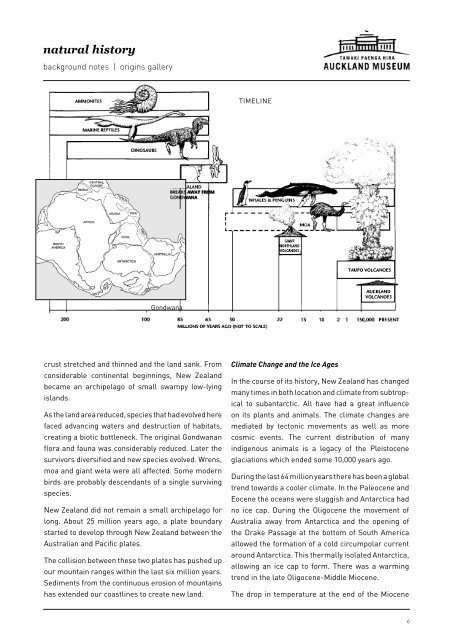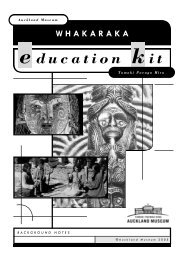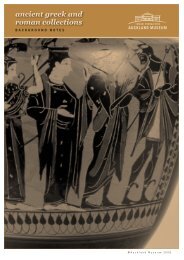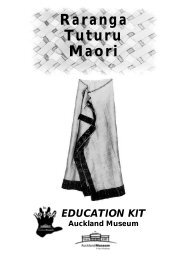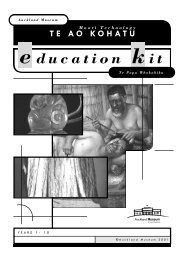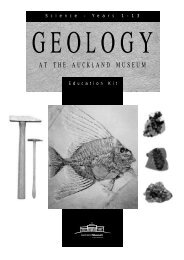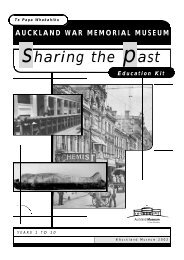Create successful ePaper yourself
Turn your PDF publications into a flip-book with our unique Google optimized e-Paper software.
<strong>natural</strong> <strong>history</strong><br />
background notes | origins gallery<br />
crust stretched and thinned and the land sank. From<br />
considerable continental beginnings, New Zealand<br />
became an archipelago of small swampy low-lying<br />
islands.<br />
As the land area reduced, species that had evolved here<br />
faced advancing waters and destruction of habitats,<br />
creating a biotic bottleneck. The original Gondwanan<br />
flora and fauna was considerably reduced. Later the<br />
survivors diversified and new species evolved. Wrens,<br />
moa and giant weta were all affected. Some modern<br />
birds are probably descendants of a single surviving<br />
species.<br />
Gondwana<br />
New Zealand did not remain a small archipelago for<br />
long. About 25 million years ago, a plate boundary<br />
started to develop through New Zealand between the<br />
Australian and Pacific plates.<br />
The collision between these two plates has pushed up<br />
our mountain ranges within the last six million years.<br />
Sediments from the continuous erosion of mountains<br />
has extended our coastlines to create new land.<br />
TIMELINE<br />
Climate Change and the Ice Ages<br />
In the course of its <strong>history</strong>, New Zealand has changed<br />
many times in both location and climate from subtropical<br />
to subantarctic. All have had a great influence<br />
on its plants and animals. The climate changes are<br />
mediated by tectonic movements as well as more<br />
cosmic events. The current distribution of many<br />
indigenous animals is a legacy of the Pleistocene<br />
glaciations which ended some 10,000 years ago.<br />
During the last 64 million years there has been a global<br />
trend towards a cooler climate. In the Paleocene and<br />
Eocene the oceans were sluggish and Antarctica had<br />
no ice cap. During the Oligocene the movement of<br />
Australia away from Antarctica and the opening of<br />
the Drake Passage at the bottom of South America<br />
allowed the formation of a cold circumpolar current<br />
around Antarctica. This thermally isolated Antarctica,<br />
allowing an ice cap to form. There was a warming<br />
trend in the late Oligocene-Middle Miocene.<br />
The drop in temperature at the end of the Miocene<br />
6


